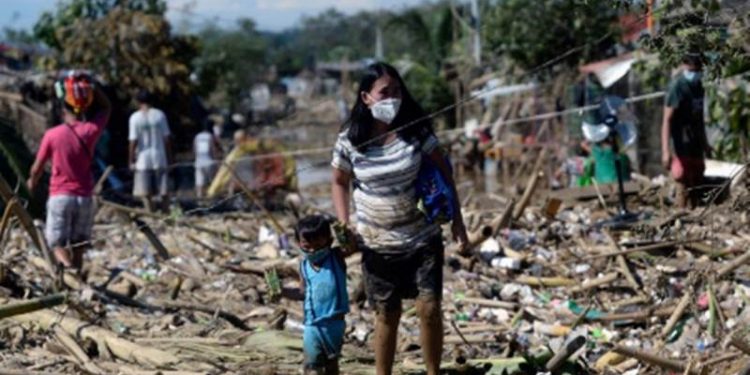According to the the Philippines national disaster management agency, the death toll from the deadliest cyclone to hit the Philippines this year has climbed to 67, with 12 people still missing.
President Rodrigo Duterte was scheduled to fly to the northern Tuguegarao province on Sunday to assess the situation in the Cagayan Valley region, which was heavily flooded after Typhoon Vamco dumped rain over swathes of the main Luzon island, including the capital, metropolitan Manila.
Twenty-two fatalities were recorded in Cagayan, 17 in southern Luzon provinces, eight in Metro Manila, and 20 in two other regions, said disaster agency spokesman Mark Timbal.
Twenty-one people were injured, he said.
Many areas in Cagayan, a rice- and corn-producing region of 1.2 million people, remained submerged as of Sunday, according to an aid agency and media reports.
Heavy flooding, caused by the accumulated effects of previous weather disturbances, as well as water from a dam and higher plains have affected thousands of families, some of whom had fled to rooftops to escape two-storey high floods.
The International Federation of the Red Cross said 47,000 people have been rescued so far, but that it “fears for the safety and wellbeing of thousands who remain trapped”.
“Our teams are urgently searching for people trapped in these horrifying floodwaters and rescuing people who have been forced to camp on their roofs. These floods are a calamity and the worst we have seen in Cagayan for at least 40 years,” said Philippine Red Cross Chairman Richard Gordon.
The damage to agricultural commodities due to floods was initially pegged at 1.2 billion pesos ($25m), while infrastructure damage was estimated at 470 million pesos ($9.7m), said Timbal of the disaster agency.
Nearly 26,000 houses were also damaged, he said.
Relief and rescue operations continued while water at the nearby Magat Dam was still gushing out, two days after releasing a volume equivalent to two Olympic-size pools per second, based on government data.
Vamco, the 21st cyclone to hit the Philippines this year, tore through Luzon late on Wednesday and caused the worst flooding in years in parts of the capital.
It followed Super Typhoon Goni, the world’s most powerful storm this year, which brought heavy rain to southern Luzon provinces and killed many people just a few days earlier.



